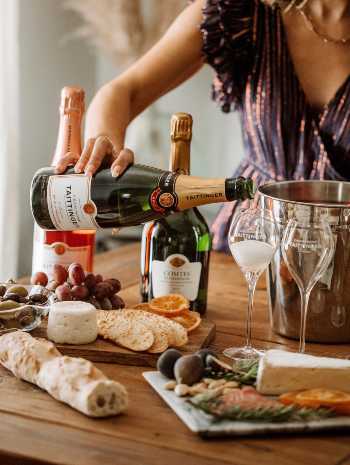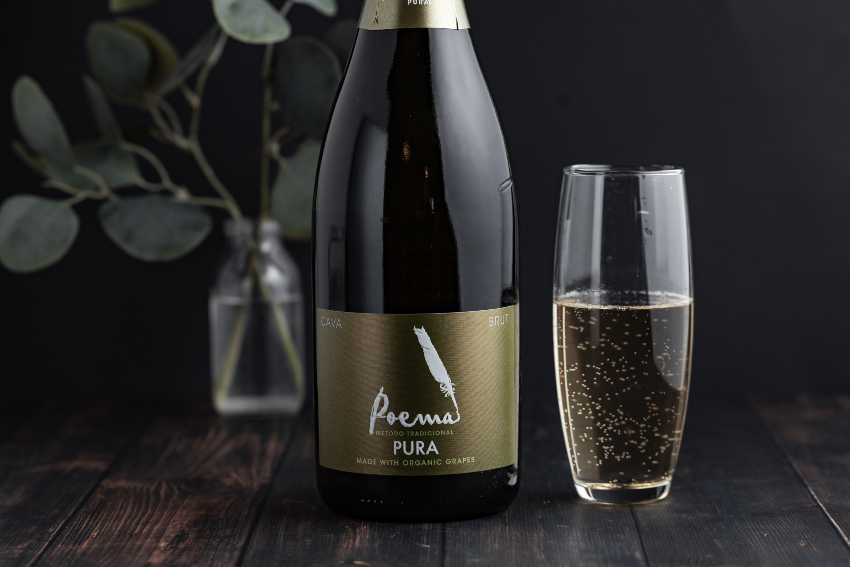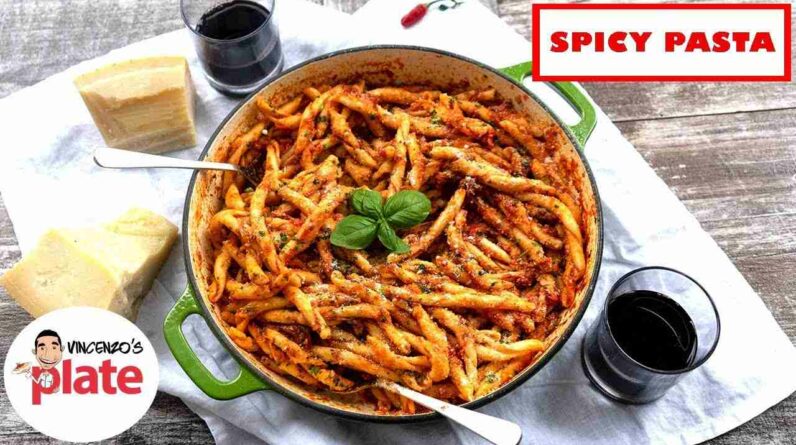Wine education can be a bit daunting, but it doesn’t have to be! I like to take wine concepts and break them down into digestible, easy-to-understand nuggets. Most people can wrap their heads around how to make alcohol. It’s a simple fermentation process: yeast converts sugar (i.e. grape juice) into alcohol (i.e. wine). Bada-bing, bada-boom, you have yourself some vino. (If we’re talking about spirits, a distillation process happens after the fermentation, but that’s a different topic!) But if you’ve ever wondered how sparkling wine is made, the process is a little more nuanced.
Got Bubbles?

I have always LOVED bubbly. All kinds of bubbly: serious Champagnes, nutty Cavas, or fruit-forward Prosecco. Team Bubbly all the way. As a novice wine drinker years ago, I did wonder how the heck bubbles happened and why the bottles literally didn’t explode from the pressure (turns out, they used to!). As I pursued my wine education, I began to understand the process to make bubbles happen in wine.
How Sparkling Wine Is Made with the Traditional Method – in Less than 500 Words
Here are the steps to get bubbles in bubbly. What I’m going to explain to you is the “traditional method” or the “methode Champenoise.” This style is in Champagne, Cremants from elsewhere in France, Franciacorta (sparkling wine from Lombardy, Italy), and Cavas from Spain.
Step 1:
Start with a still, dry base wine (usually in stainless steel tanks). If you were making regular non-sparkling wine, you’ve already reached the finish line.
Step 2:
That wine is then bottled with additional sugar and yeast (i.e. the liqueur de tirage) so a second fermentation can take place IN the bottle. A closure tops the bottle (usually a crown cap). The second fermentation creates carbon dioxide (CO2) inside the bottle as the yeast is eating the sugar. This CO2 has nowhere to go and essentially carbonates the wine and creates bubbles!
Step 3:
During this time period, yeast autolysis takes place. Yeast autolysis is when the dead yeast cells (i.e. lees) breakdown in the wine. The dead yeast cells impart autolytic flavors. This is pretty much what makes Champagne taste like Champagne. The flavors include yeastiness, toasty flavors, biscuit flavors, and doughiness. How much autolytic flavors the winemaker desires will determine the length of time the wine is spent sur lie (i.e. resting on the lees). It can be anywhere from a few weeks to a few years.
Step 4:
Next is the riddling of the wine. The bottle is slowly moved from a horizontal to a tilted vertical position (manually or by machine). This moves the sediment to the top of the bottle.
Step 5:
Disgorgement follows in which the neck of the bottle is submerged in cold brine to freeze it. Once the closure is removed, that frozen sediment piece pops out.
Step 6:
A dosage (or a liqueur d’expédition) is added back to the bottle. This is a small amount of base wine and sugar. The amount of dosage added determines the level of sweetness of the wine. To keep the contents under pressure until the cork is popped, the bottle is then sealed with a sparkling wine closure (including the wire cage).
Taste-test the traditional method
Poema Pura Cava
Made from the traditional, indigenous Spanish grapes used in Cava: Xarel-lo, Parellada, and Macabeu, this is a classic Brut style Cava made with certified organic grapes. If ever you are in need of a well-priced traditional method sparkling, Cava is surely the answer. This wine is clean, fresh, and bone dry. Perfect with tapas and light appetizers.
Don’t miss it: Simple Ways Cava Can Upgrade Your Next Gathering

So how do bubbles get into bubbly? It’s due to the CO2 generated during the second fermentation (can be in bottle or tank). This CO2 cannot escape. The result: bubbles. Voila, you just upped your wine game!
Fun Fact: On a bottle of sparkling wine, how many times does the wire cage have to be turned before you get it off? Answer: Six…..always six turns.




